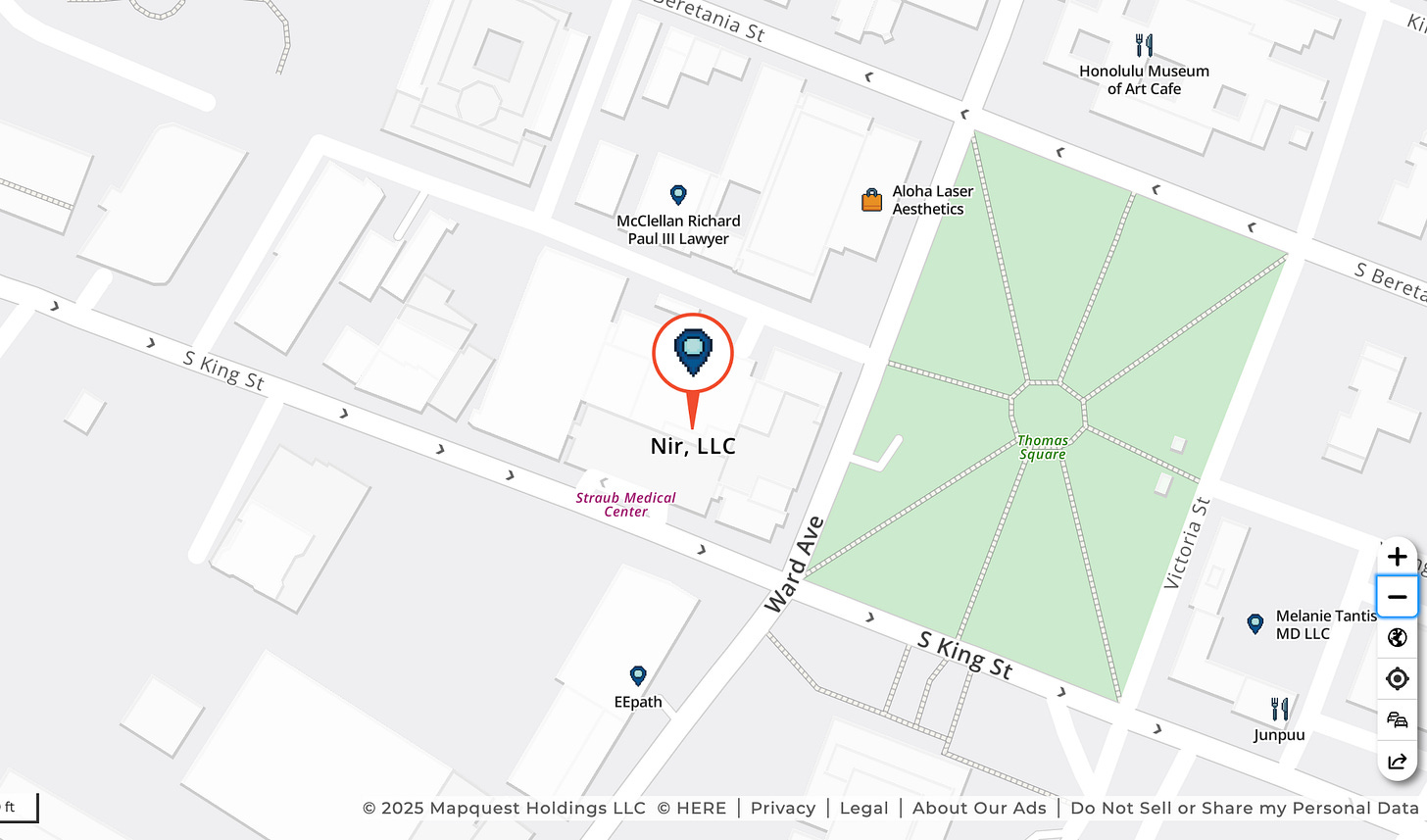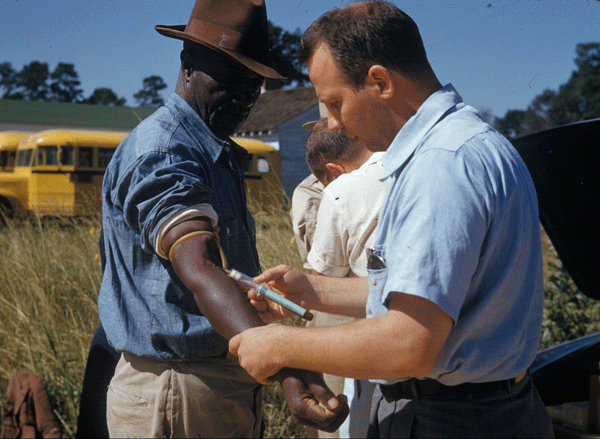I’m starting a new series today, and I wish I didn’t have to.
For months, I’ve been watching Neuralink, Elon Musks brain chip company. Not casually, the way you might keep an eye on any tech company making headlines, but with the kind of attention you give something when the pieces don’t quite fit together right. When the patterns start forming shapes you don’t want to recognize.
Not enough people are watching this company as closely as they should be. Not enough people are asking why a brain chip startup needs to scale at impossible speeds, or why their trial sites keep appearing near detention facilities, or what exactly happens in the gaps where documentation mysteriously goes missing. Neuralink has some pretty dark corners, and the deeper I dig, the darker those corners get.
So this is the first part of “Who TF Is In My Head?” Because if what I’m seeing is real, that question might become horrifyingly literal for people who never consented to ask it.
Want to support investigations like this? Subscribe to the $5/month Rough Riders tier! It’s what funds late nights in federal contract databases and the coffee required to make sense of what I find there.
The Impossible Timeline
In July 2025, Elon Musk announced that Neuralink needs to scale from 7 brain implants to approximately 1,000 implants by the end of 2026. That’s 993 additional people over roughly 15 months. About 60 patients per month receiving experimental brain surgery.
Given the pace at which they completed those first seven implants, this timeline feels not just ambitious but nearly impossible. Unless, of course, you’ve solved some very specific problems about recruitment. Problems that become considerably easier if you stop thinking about volunteers and start thinking about... other arrangements.
The Geography Problem
Neuralink has FDA approval for two sites in the United States. The first is at the Barrow Neurological Institute in Phoenix, Arizona. The second is at the University of Miami in Florida, which houses a major neurological research program.
Both cities have something else in common: massive ICE detention facilities nearby.
Miami has the notorious Krome Detention Facility, the primary intake center for detained immigrants in South Florida. From December 2024 to February 2025, there were three deaths at Krome. One per month. All involved neurological symptoms: brain hemorrhages, seizures, vomiting.
One of them was Maksym Chernyak. He was 44 years old, Ukrainian, and here legally on humanitarian parole after fleeing the war. According to his wife, he had no pre-existing health conditions. He wasn’t on any medications. He had passed medical screenings before being paroled into the United States.
Sixteen days after arriving at Krome, he was dead from a massive brain hemorrhage. The CT scan showed catastrophic intracranial bleeding.
Sixteen days from intake to brain death. A healthy man in his forties. No explanation that anyone’s offered publicly. The kind of thing that, under different circumstances, might warrant investigation. The kind of thing that makes you wonder what else isn’t being investigated.
Phoenix presents a different pattern. Near the Barrow Neurological Institute, you’ll find major ICE facilities at Eloy and Florence. According to advocacy reports, the average time spent in solitary confinement at these Arizona facilities jumped from 14 days in 2024 to 38 days in 2025. That’s a 271% increase.
Thirty-eight days is a long time to be alone. Long enough that if something happened to you, if you woke up with gaps in your memory or unexplained symptoms, it would be difficult to establish when or how. Long enough that confusion could be dismissed as the natural result of isolation. Long enough to make a person wonder if their own memory is reliable.
And this spike happens to coincide exactly with Neuralink’s desperate push to scale up operations. Which is probably nothing.
The Honolulu Mystery
These patterns had been bothering me for months, so tonight I decided to dig deeper. I went to USAspending.gov, a website that tracks federal contracts and makes them publicly searchable. I started by looking for anything connecting the Department of Defense with neurological surgery. That’s when I started seeing something strange; Honolulu was appearing over and over and over again.
Multiple DOD contracts for neurological services, neurological procedures, neurological surgery practices. All ramping up starting in 2025. All going to a company called NIR, LLC. All listing the work location as Tripler Army Medical Center, a major military hospital in Honolulu.
At first, I thought maybe this was just routine military medical care. But when I tried to look up NIR, LLC, I found nothing. No company website. No physician names. Nothing.
For a medical contractor performing neurological surgeries with federal money, having zero online presence is unusual. Not impossible. Just unusual in the way that makes you keep looking.
Then, at the very bottom of a Google search, I found a MapQuest link showing NIR, LLC at 888 South King Street in Honolulu. When you search for NIR, LLC on any other mapping service, nothing comes up. But when you type in that address directly, something very interesting appears.
Straub Medical Center. One of Hawaii’s largest civilian hospitals with a major neurology and neurosurgery department.
So we have a shell company with a billing address at a commercial office building, apparently operating out of a civilian hospital with substantial neurosurgery capabilities, being paid by the Department of Defense for services at a military hospital. All on the same island.
The paper trail isn’t missing. It’s just been folded into… an interesting shape.
The LinkedIn Receipts
I decided to search LinkedIn for anyone listing Neuralink as their current employer who also lives in Honolulu. Hawaii isn’t on Neuralink’s official list of FDA-approved trial sites, but absence of evidence isn’t always evidence of absence.
And what do you know, I found two people.
The first is a clinical project manager who works at Neuralink and lives in Honolulu. She’s been with the company for several years. Her listed responsibilities include trial site management, implementation of clinical trials, management and oversight of external vendors, and negotiating relationships with organizations.
She manages trial sites and external vendors. But Hawaii isn’t an official Neuralink trial site… So perhaps she’s just really committed to remote work?
The second person runs something called Hang10X capital, a private equity firm based in Honolulu that invests in fintech and food startups. When I looked at their portfolio, Neuralink was listed as one of their investments.
So we have:
Neuralink personnel on the ground in Honolulu.
Federal neurological surgery contracts flowing through a shell company to a major civilian hospital.
A private equity money connecting back to Neuralink.
But no official trial site.
The Missing Piece
If my thesis is that something deeply wrong is happening with Neuralink operations near ICE detention facilities, then Hawaii might fit that pattern too. So I asked the question I immediately regretted asking: Is there an ICE detention facility near these medical facilities in Honolulu?
In February 2025, ICE signed an agreement to start housing detainees at FDC Honolulu. That’s a 992-bed facility — I had no idea this existed. Did anyone else know about this?
Then I found an article from July 2025 explaining that detainees were being transferred to Hawaii from Florida and Arizona detention facilities. The exact two states where Neuralink trials had officially started.
The distance between FDC Honolulu and Straub Medical Center, where NIR, LLC apparently operates? A chilling eight miles; a fifteen-minute drive. (At this point, I’m running out of ways to say “this seems like an unusual coincidence.”)
The Doge Connection
February 2025 is an important month in this timeline. That’s when ICE signed the agreement to use FDC Honolulu for detainees. It’s also when Elon Musk’s Department of Government Efficiency was still operating inside the White House.
During that same month, Doge fired 20 FDA employees. I looked up which department they came from. The Office of Neurological and Physical Medicine Devices. The exact office that oversees Neuralink’s clinical trials.
You remove the people whose job is to ask uncomfortable questions at the exact moment you’re establishing infrastructure that might generate uncomfortable questions. It’s efficient, I’ll give them that.
The Transfer Shell Game
When detainees are transferred to Hawaii, they apparently go through five to seven different facilities first. One detainee was arrested in Florida in May, moved through two other facilities, then to Louisiana, then Arizona, then California, before finally landing in Hawaii. He wasn’t even served with charging documents until June.
That’s a month of completely unaccounted time. Then, once they arrive in Hawaii, they’re 4,500 miles away from anyone who might advocate for them.
If something happened to you during that month, if you tried to explain it later, you’d have to account for your location across multiple states and facilities. You’d have to remember dates and names. You’d have to overcome the assumption that detained people are unreliable narrators of their own experiences.
And if you complained too loudly, there’s always deportation. Which has the convenient effect of removing both the witness and the evidence from the jurisdiction simultaneously. We’ve seen this playbook before. At Irwin County Detention Center in Georgia, women reported unauthorized gynecological procedures. Those who complained were deported within days. The pattern is well-established.
The Doge/ICE Collaboration
In April 2025, acting ICE Director Todd Lyons gave a presentation at the Border Security Expo in Phoenix. He specifically stated that ICE had been working frequently with Elon Musk’s Doge.
It’s not often that the coordination is this explicit. Usually, you have to infer the connections. But apparently, we’ve reached the point where they just say it out loud at expos.
A Question of Access
There’s a very old problem in medical research: you need test subjects. Preferably lots of them. Preferably ones who can’t refuse, or won’t be believed if they complain, or can be disappeared if they become inconvenient.
History is full of examples. We’ve done this before. The Tuskegee Study. Guatemala syphilis experiments. The history of gynecology itself, built on enslaved women who couldn’t consent and weren’t anesthetized. We know what it looks like when medical advancement decides certain populations are acceptable collateral.
The infrastructure for that kind of exploitation doesn’t announce itself with neon signs. It builds quietly. A detention facility here, a shell company there, a convenient absence of oversight at exactly the right moment. You remove the people who ask questions. You isolate the population you’re interested in. You create gaps in documentation where interesting things could happen without anyone noticing.
And then you wait for someone to notice anyway, and you rely on the fact that it sounds too conspiratorial to be true. That surely, in 2025, we wouldn’t do something like that. That there must be some reasonable explanation.
And if there is — I’d love to hear it.
What We Need Now
I don’t know with certainty what’s happening in these facilities. I know what the infrastructure looks like. I know what the incentives are. I know what history tells us happens when you combine captive populations with ambitious medical research and deliberately removed oversight.
I know that Maksym Chernyak’s wife would probably like to know why her healthy husband died of a massive brain hemorrhage sixteen days after being detained. I know that someone at NIR, LLC should be able to explain why their company has no web presence but millions in federal contracts. I know that children across our country would love to know where their parents are being taken away to.
We need members of Congress to ask why DOD neurological surgery contracts are flowing through shell companies to civilian hospitals. We need the remaining FDA staff to explain what oversight exists for experimental procedures at military facilities.
Because right now, all we have is infrastructure that looks purpose-built for something we’d rather not name. All we have are patterns that keep appearing in different cities but with the same components. All we have are gaps in documentation where accountability should be.
And we have Elon Musk’s announced timeline: from 7 brain implants to 1,000 in fifteen months. Sixty patients per month. In a technology that’s experimental, risky, and requires extensive informed consent.
Unless it doesn’t.
Sources Cited
Neuralink’s 1,000 implant goal: Teslarati. “Elon Musk: over 1,000 humans with Neuralink implants in 2026 is feasible.” July 12, 2024. https://www.teslarati.com/elon-musk-over-1000-humans-neuralink-implants-2026/
Barrow Neurological Institute partnership: Barrow Neurological Institute. “PRIME Study Site Announcement.” April 12, 2024. https://www.barrowneuro.org/about/news-and-articles/press-releases/prime-study-site-announcement/
Maksym Chernyak’s death: NBC Miami. “Ukrainian man is 3rd to die in ICE custody at Krome Detention Center.” March 3, 2025. https://www.nbcmiami.com/news/local/theres-a-pattern-ukrainian-man-is-3rd-to-die-in-ice-custody-at-krome-detention-center/3556811/
Solitary confinement increase (14 to 38 days): Axios Phoenix. “Arizona immigrant detention sees solitary confinement spike.” October 2025. https://www.axios.com/local/phoenix/2025/10/08/arizona-ice-solitary-confinement-rise
Comprehensive solitary confinement data: Physicians for Human Rights. “Cruelty Campaign: Solitary Confinement in U.S. Immigration Detention.” September 17, 2025. https://phr.org/our-work/resources/cruelty-campaign-solitary-confinement-in-u-s-immigration-detention/
FDC Honolulu February 2025 ICE agreement: Honolulu Star-Advertiser. “Honolulu’s Federal Detention Center to house ICE detainees.” July 5, 2025. https://www.staradvertiser.com/2025/07/05/hawaii-news/honolulus-federal-detention-center-to-house-ice-detainees/
Transfers from Florida and Arizona to Hawaii: Honolulu Civil Beat. “ICE Is Moving Immigrants Arrested On The Mainland To Honolulu.” July 15, 2025. https://www.civilbeat.org/2025/07/ice-moving-immigrants-arrested-mainland-to-honolulu/
Todd Lyons and DOGE collaboration: Arizona Mirror. “ICE director envisions Amazon-like mass deportation system: ‘Prime, but with human beings.’” April 9, 2025. https://azmirror.com/2025/04/08/ice-director-envisions-amazon-like-mass-deportation-system-prime-but-with-human-beings/
2025 as deadliest year in ICE custody: NPR. “2025 is the deadliest year to be in ICE custody in decades.” October 23, 2025. https://www.npr.org/2025/10/23/nx-s1-5538090/ice-detention-custody-immigration-arrest-enforcement-dhs-trump
Overcrowding and medical neglect at Krome: WLRN. “Increased medical emergencies at Krome as immigrant detention swells.” August 29, 2025. https://www.wlrn.org/immigration/2025-08-29/increased-medical-emergencies-at-krome-as-immigrant-detention-swells
Additional Research
Note: Additional sources for federal contracts, FDA personnel changes, and detention facility transfers are being compiled through FOIA requests and will be updated as information becomes available.
Investigative Methodology:
This article is based on publicly available information including government press releases, news reports, medical facility announcements, and advocacy organization statements. Claims about patterns and connections represent the author’s analysis of documented facts and timelines. Readers are encouraged to review primary sources and draw their own conclusions.













